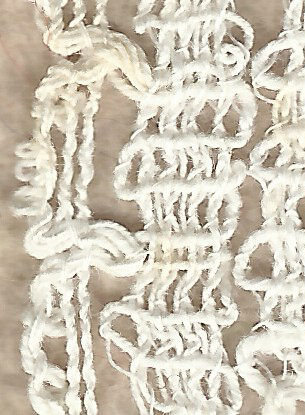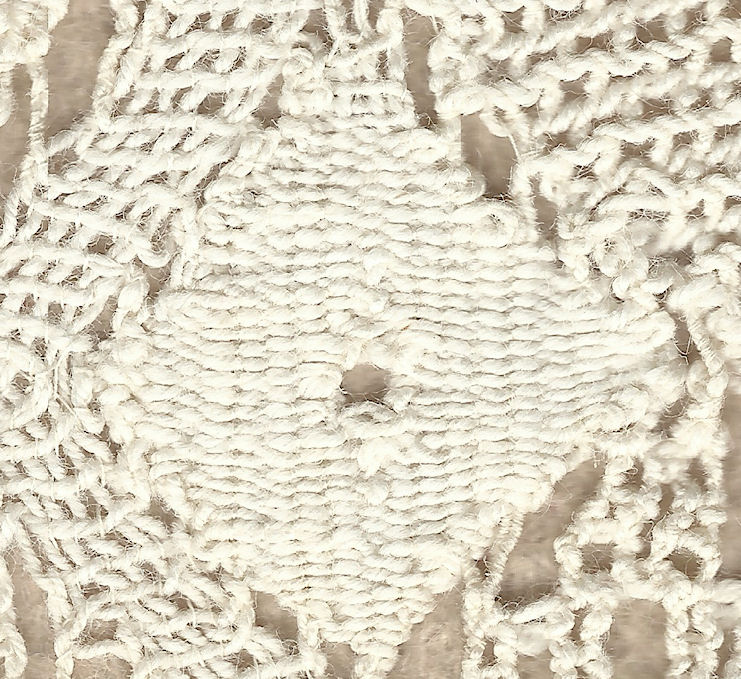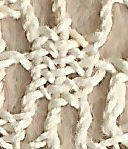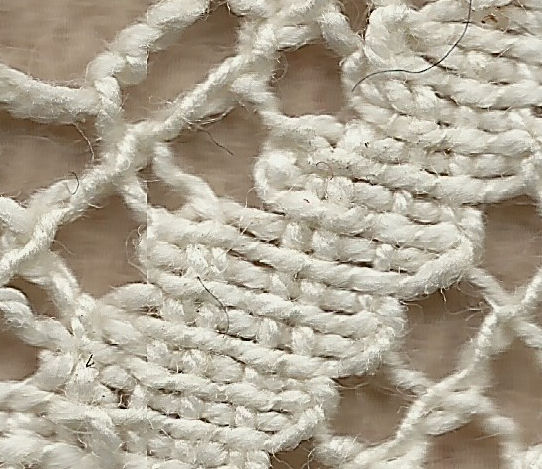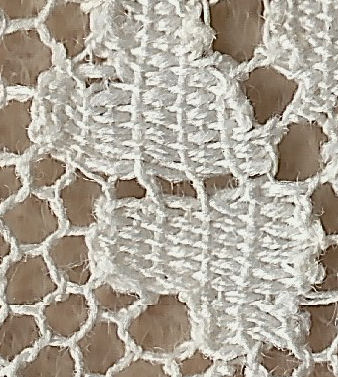
For a description of how cloth stitch is done, with an animation, click here. The technical description of cloth stitch is CTC, or cross, twist, cross.
Cloth stitch looks very like simple woven cloth (hence the name). However, one row of lace does not use one thread, but a pair of threads. You can see in this example how this pair of threads gets to the end of the row, then both threads turn back on themselves to make the next row. This pair of threads going from left to right, then back again, are called the workers (because they do all the work). The threads hanging straight down are called the passives (because they don't!) The passives on the right gradually join the shape, one pair at a time, making a diagonal edge to the shape, then they leave it one pair at a time, with the diagonal going the other way. This is typical of the Torchon style of lace, although it is used elsewhere. Click here for the whole piece of lace.


